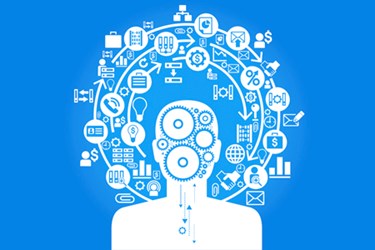What The IT Channel Says About Tech's Impact On Healthcare IT
By Megan Williams, contributing writer

The Huffington Post recently released a list of leading technologies from Vala Afshar, CMO of Extreme Networks, that are changing the healthcare landscape. Here, we provide some key insights into some of the most important from that list from Business Solutions magazine (BSM) contributors and writers.
- Smartphones. The full extent of the use of smartphones in healthcare environments is still being discovered. With the rise of the importance of data (see number 8) and the development of apps geared specifically toward clinical settings, the opportunities, when it comes to the role that this technology will play in the future is boundless. One of the biggest questions around their use though, has been durability. Rugged devices have ruled the landscape, but still don’t offer the flexibility or power of the more advanced (though less durable) smartphones. The industry is seeing some interesting efforts to combing the best of both worlds, Doug Brown, vertical marketing manager for Honeywell Scanning & Mobility points out in this article.
- Wi-Fi. This has been a staple of the healthcare environment for years, outpacing the use of LAN connections in some facilities. Still though, as is characteristic for the industry, healthcare lags a bit behind in this area, demonstrating a need to wirelessly converge communications and address issues of patient data security and personal device management more thoroughly. Here, Phillip Haritos, senior manager of healthcare solutions for Motorola Solutions covers four reasons healthcare facilities need to take a revamped look at their wireless applications.
- BYOD. The use of personal devices has not shown as big of an impact in healthcare as it has in other industries — which isn’t surprising. The dynamics of using personal devices (from the nature of the information to security issues) is different in healthcare. Still, the BYOD tech trend brings its own challenges to the industry and there are definitely ways for connected solutions providers to capitalize on its growth, reports BSM’s Jay McCall, based on an interview with Dell, AVG, and GFI MAX.
- Government Mandates. HITECH, HIPAA, ICD-10 (and the coming 11) and Meaningful Use — it seems like the flow of regulation changes in healthcare just won’t stop. While this can seem like a speed bump for solutions providers, in reality, it means that their clients need them even more. Most organizations can’t afford to wait and see what changes regulations will bring, and have to be proactive in addressing their IT security needs.
- VoIP. The advent of VoIP has revolutionized the infrastructure of healthcare for both data and voice traffic. This has proven essential for facilities and other entities where up to date information can literally mean life or death and where 24/7 communication is generally the norm. Combine that with the need for security that is so prevalent with patient data and you’ll see doors opening on new ways to approach the way you sell security to your clients.
- Social. Social media provides unprecedented opportunities to connect with patients, other facilities, and the healthcare community at large. The importance of this advancement cannot be taken for granted — especially considering the sensitivity of patient information and a move toward healthcare that is drive by both patient, and patient population behavior. The industry as a whole is adjusting, and IT will need to follow suit, comments editor-in-chief Mike Monocello.
- Virtualization. Healthcare IT teams have seen new flexibility come from the use of virtualization — all while maintaining high levels of patient care. As The Huffington Post states IaaS and PaaS are “emerging to drive growth the in virtual cloud and virtual storage”. Facilities though, still need considerable help in this area, and McCall reports from an interview with E-Safe Technologies that there are some definite steps you can take in becoming a trusted virtualization advisor within the industry.
- Big Data. It’s safe to say there are few things bigger than the talk of big data in healthcare today. The subject impacts healthcare at levels that range from general security to predicting and managing clinical outcomes through EHR use. The full scope of the impact has yet to be seen, so we recommend taking a look at some of our work covering the role of big data in healthcare here.
This website uses cookies to ensure you get the best experience on our website. Learn more
